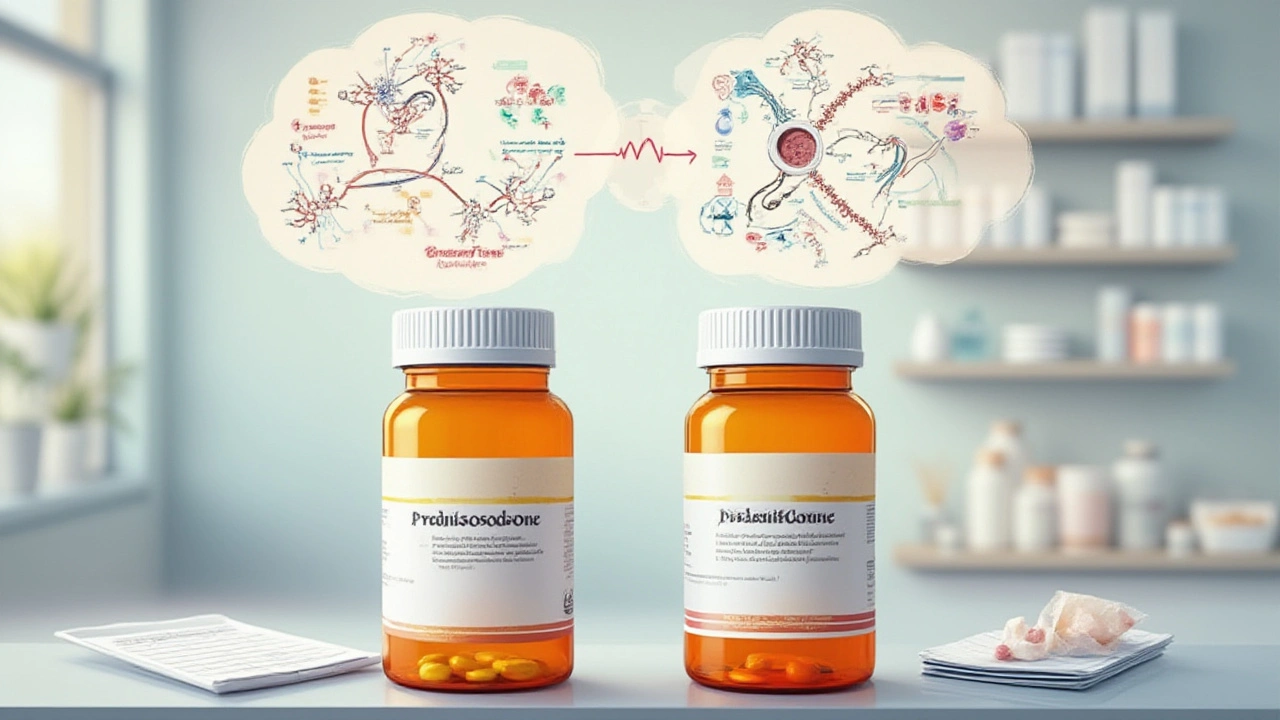Prednisolone – What It Is and When It’s Used
Ever wonder why doctors hand out a small bottle of prednisolone for everything from asthma attacks to skin rashes? It’s a synthetic corticosteroid that mimics the body’s own cortisol, dialing down inflammation and immune responses. In short, it calms the immune system when it’s over‑reacting, which is why you’ll see it prescribed for allergies, asthma, arthritis, autoimmune diseases, and even certain cancers.
Because it acts fast, prednisolone is often the go‑to short‑term solution for flare‑ups. But it’s not a lifelong fix for most conditions – long use can tip the balance and cause its own set of problems. Knowing when and how to use it makes the difference between relief and trouble.
How to Take Prednisolone Correctly
First things first: follow the doctor’s exact dosing instructions. Prednisolone tablets, liquids, or injections each have their own dosing tricks. For oral tablets, the usual adult dose ranges from 5 mg to 60 mg a day, split into one or two doses. Start low, go slow – many doctors start with a higher “burst” dose for acute attacks and then taper down over a week or two.
Never stop suddenly after a long course. Your adrenal glands need time to start making cortisol again, so tapering is essential. If you’ve been on prednisolone for more than a couple of weeks, ask your doctor for a taper schedule that gradually reduces the dose.
Take the pill with food or milk if it upsets your stomach. If you’re on the liquid form, use a proper measuring device – a kitchen spoon is not accurate enough. And if you miss a dose, take it as soon as you remember unless it’s almost time for the next one. In that case, skip the missed dose; don’t double up.
Watch Out: Common Side Effects & Risks
Prednisolone works by suppressing the immune system, so infections can sneak in more easily. Keep an eye on fevers, persistent coughs, or unusual bruising – those could be warning signs.
Typical short‑term side effects include increased appetite, weight gain, mood swings, and trouble sleeping. Long‑term users may see bone thinning (osteoporosis), high blood pressure, eye problems like cataracts, and elevated blood sugar that can trigger diabetes.
If you notice sudden swelling in your face or legs, severe stomach pain, or unexplained rash, call your doctor right away. Those could signal serious complications that need immediate attention.
Because prednisolone can interact with many medications – from NSAIDs to blood thinners – always give your pharmacist a full list of what you’re taking. This helps avoid nasty surprises like stomach ulcers or altered blood clotting.
Now, let’s talk about getting prednisolone safely online. The UK has strict rules: you need a valid prescription from a licensed prescriber, and the pharmacy must be registered with the MHRA. Look for clear contact details, a physical address, and a pharmacy registration number on the site. Avoid any “no‑prescription needed” offers – they’re often scams and can land you with counterfeit pills.
Before you checkout, compare prices on a few reputable sites, but don’t let low cost override safety. Check for secure HTTPS connections, read user reviews, and verify that the pharmacy offers a pharmacist‑accessible consultation. Once you receive the medication, inspect the packaging for tamper‑evident seals and correct labeling.
Finally, keep a copy of your prescription and the pharmacy receipt. If you spot anything off – wrong dosage, missing batch number, or unexpected side effects – contact the pharmacy immediately and report it to the MHRA.
Prednisolone can be a lifesaver when used correctly, but it demands respect. Stick to the prescribed dose, watch for side effects, and choose a trustworthy online pharmacy if you need a refill. With the right approach, you’ll get the relief you need without unnecessary risks.
-
Prednisolone vs. Prednisone Side Effects: Pharmacokinetic Differences Explained
Compare prednisolone and prednisone: explore their pharmacokinetic differences, dosing, and how each impacts side effects for safer, smarter medication use.
